Try going to bed knowing we are not 100% humans.
It sounds like science fiction. But deep inside the nucleus of your every cell, your DNA carries the ghosts of ancient pandemics.
About 8% of the human genome comes from the remnants of ancient viruses. And it doesn’t stop there. Another 40% of our DNA is made of repetitive strings that are also thought to have a viral origin.
For decades, scientists dismissed this genetic code. They called it “junk DNA”. They saw it as useless, evolutionary litter.
Well, they were wrong.
This code is not junk. In many cases, it is a vital part of our operating system. We now know that humans cannot even develop in the womb without these ancient viral instructions.
A virus from 5 million years ago is, quite literally, still building every human ever born.
This is possible because of a special class of virus called a retrovirus. A retrovirus is a bundle of genetic material. When it infects a cell, it does something amazing. It uses an enzyme to “reverse-transcribe” its RNA code into DNA. It then permanently stitches that DNA into the host cell’s own genome.
If this happens in a normal body cell, it dies with the host. But if the virus infects a sperm or an egg, that viral code becomes heritable. It is passed down to all future generations.
It becomes a human endogenous retrovirus (HERV). It becomes a part of us.
Contents
A Viral ‘Firestarter’ for Human Life
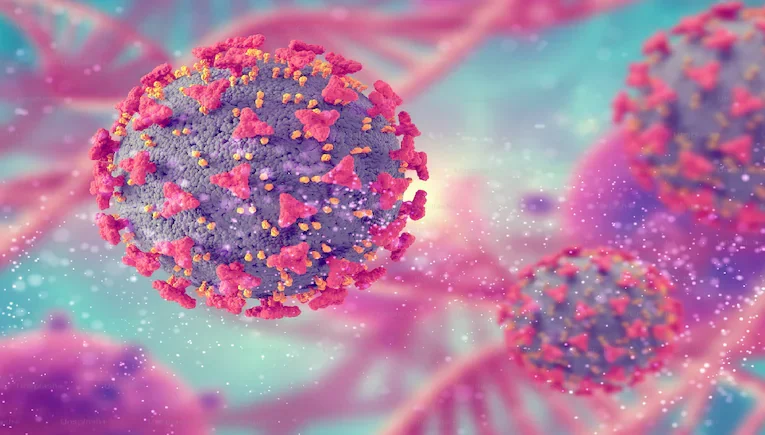
For a long time, we knew this viral DNA was there. We just did not know what it was doing. A recent study from Stanford University finally gives us a shocking answer.
Researchers, led by biologist Raquel Fueyo, investigated a group of these viral genes known as LTR5Hs. This is a “young” viral insertion. It is part of the HERV-K (HML-2) family, the most recent retrovirus to integrate into our genome, with some members arriving after the human-chimpanzee split.
These viral genes are known to be active during the first few days of development. But why?
It is almost impossible to study live human embryos. So, the team used a breakthrough technology: a “blastoid“.
A blastoid is a 3D model of a human embryo. It is grown from stem cells. It mimics the “blastocyst,” the 5-day-old ball of cells just before it implants in the uterus.
This new tech allowed the team to do what was once impossible: to switch off a viral gene and see what happens.
Also Read: Is Your Brain Even the Source of Consciousness? Neuroscientist Explains the Shocking Truth!
How a Virus From 5 Million Years Ago Became Essential
The experiment was simple. The researchers disabled the LTR5Hs viral elements in the stem cells. Then they watched.
The result was catastrophic.
The blastoids “glitched.” They failed to form. Instead of an organized, three-layered structure, they became a “disorganized clump of cells or died”.
The failure was specific. The blastoid’s “epiblast” layer could not form. This is the most important part. Think of an early embryo as having three parts: the future placenta (trophectoderm), the future yolk sac (hypoblast), and the future you.

The epiblast is the blueprint. It is the layer of cells that develops into the entire actual embryo: every organ, bone, and nerve in your body.
Without the instructions from this ancient virus, the blueprint for a human being simply fails.
Also See: Neuroscientists Reveal How Your Brain Sabotages Your Ability to Adapt (And How to Outsmart It)
The Genetic Volume Knob: LTR5Hs and ZNF729
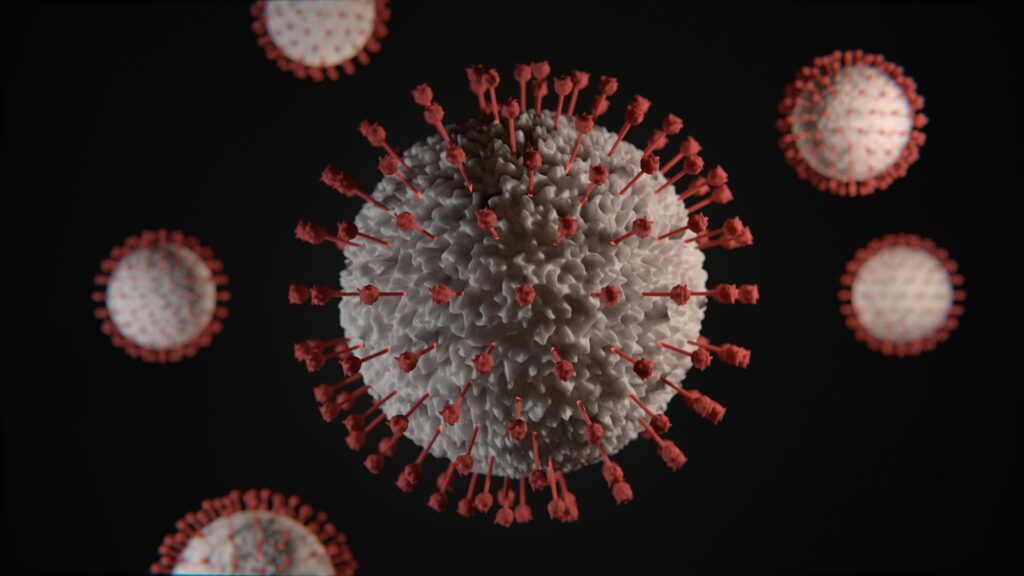
So, how does this viral code work?
The LTR5Hs viral DNA functions as an “enhancer”.
Think of a gene as a song on a stereo. The gene’s “promoter” is the “play” button. But the enhancer is the “volume knob.” An enhancer can be far away from the gene, but it loops over and cranks the volume way up.
In this case, the viral LTR5Hs enhancer is the volume knob for a different gene: a primate-specific gene called ZNF729.
ZNF729 is a “master regulator.” It is a gene that controls hundreds of other genes. Its job is to tell the new embryonic cells to “proliferate,” “metabolize,” and “grow”.
Here is the full chain of command:
- The viral LTR5Hs enhancer turns ON.
- It cranks up the volume of the ZNF729 gene.
- ZNF729 then activates hundreds of “grow” genes.
- The epiblast forms. A human is built.
Our species has become addicted to this viral code. We have a “new dependency” on it. This virus from 5 million years ago likely replaced an older, forgotten mechanism for embryonic growth. Evolution bet on the virus. And now, we cannot live without it.
Also Read: Breakthrough As Oxford Scientists Achieve Teleportation With Quantum Supercomputers — Here’s How
Not a One-Time Glitch Either
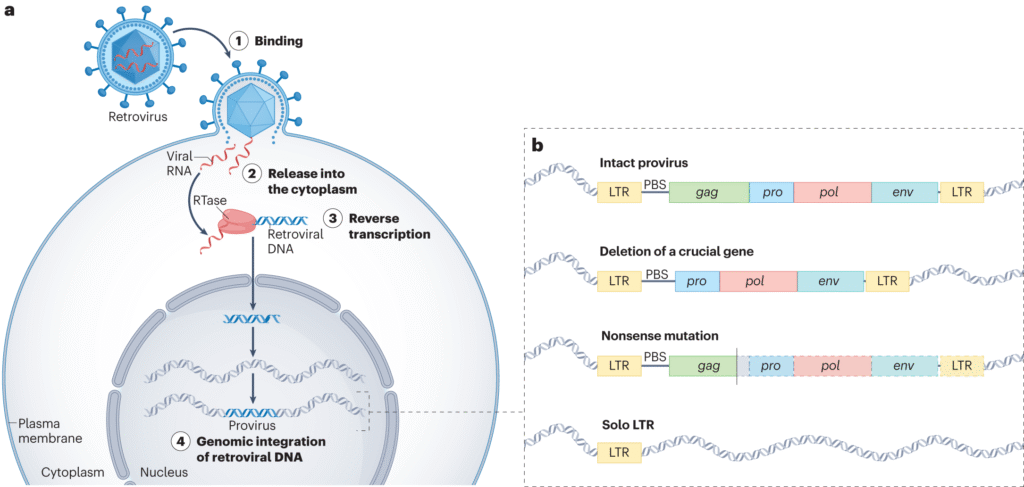
This is not the only time a virus built us. The most famous example of viral “domestication” is the organ that makes mammals possible: the placenta.
This, too, involves human endogenous retroviruses.
A key gene for placenta formation is called Syncytin. This gene is not “human” in origin. It is a captured viral envelope (env) gene.
A virus uses its env gene to do one thing: fuse with a host cell. It is the key that picks the lock.
Our ancestors “stole” this gene. We now use that exact same fusion protein to build the placenta. The gene forces human cells to fuse, creating the essential outer layer of the placenta called the syncytiotrophoblast.
We know this is essential. In studies where Syncytin genes are “switched off” in mice, the placenta fails to form. The embryos die.
This was not a one-time accident. Cows, sheep, and other mammals have also captured different viral genes, at different times in history, to build their placentas. Evolution “learned” this trick and used it again and again.
The Fetus’s Viral Invisibility Cloak
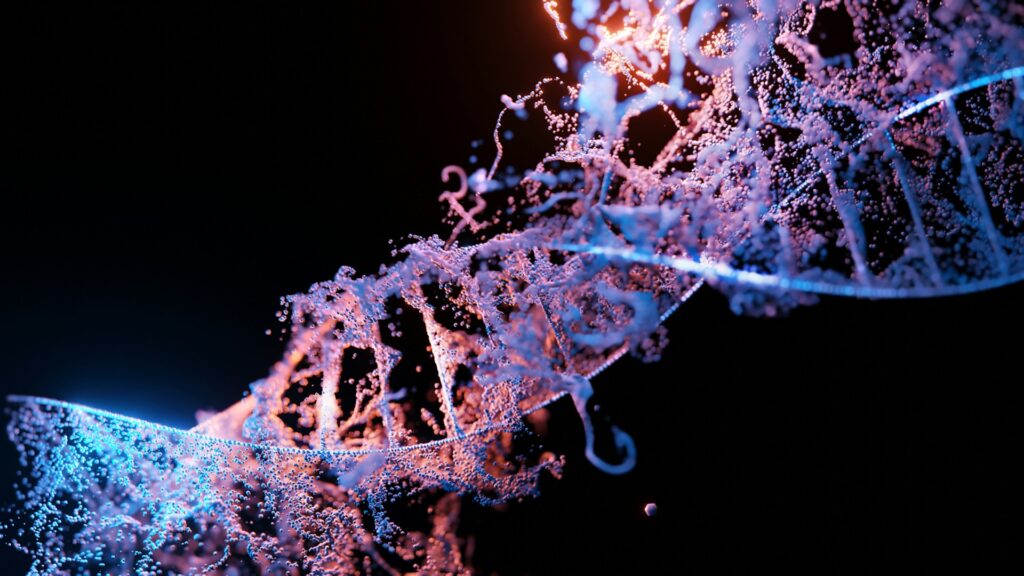
The Syncytin gene came with a bonus feature. This is what makes it so brilliant.
A fetus is “semiallogenic”. Half of its DNA is from the father. To the mother’s immune system, the fetus is a foreign object. It should be attacked and rejected.
So why isn’t it?
The viral env gene also contains an immunosuppressive region. Viruses, by nature, are masters of evading immune systems.
When our ancestors “domesticated” this gene, it came with its original “invisibility cloak.” The Syncytin protein, expressed in the placenta, tells the mother’s immune system, “Don’t attack. I am part of you.”
This single ancient infection solved the two biggest problems of live birth. It provided the tool to build the new organ and the shield to protect it.
When Viral Ghosts Wake Up
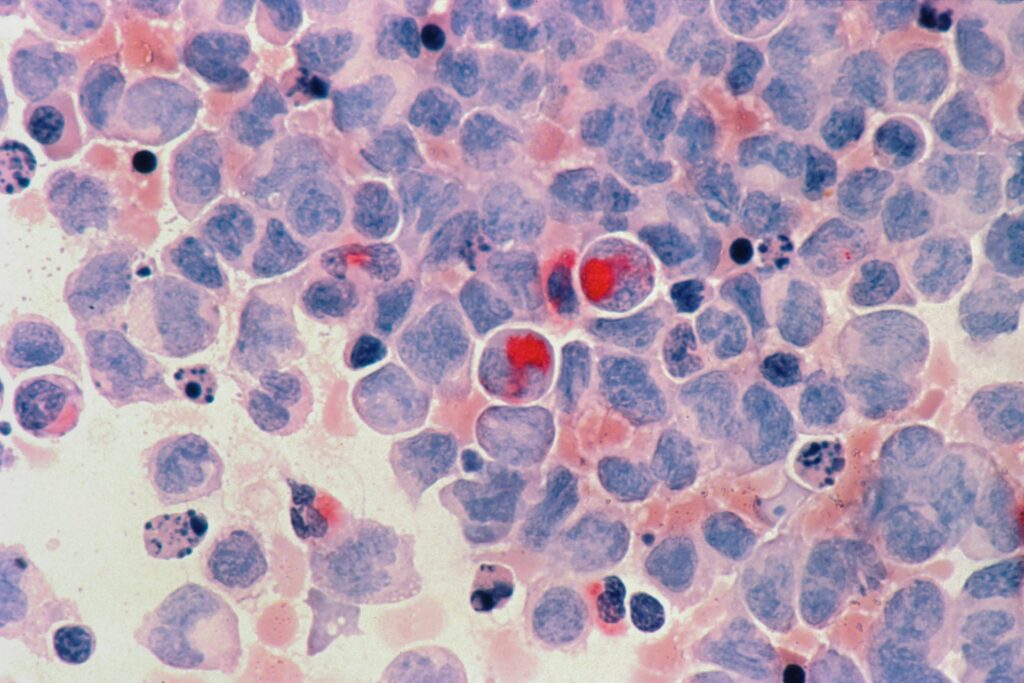
So, these ancient viruses are our friends. Right?
Not always.
Our partnership with these viral ghosts is a fragile one. In a healthy adult, nearly all of these human endogenous retroviruses are “globally silent”. Our bodies spend a massive amount of energy using “epigenetic silencing” to keep them locked away.
Health is a state of active suppression.
The problem comes when this suppression fails. When these ancient genes “dysregulate” or “reactivate,” they are linked to some of our most devastating modern diseases.
Cancer is, at its core, uncontrolled cell growth. Remember that LTR5Hs “volume knob” that helps the embryo grow? Reactivated viral LTRs can act as enhancers for cancer genes. They crank the “grow” signal to maximum at the wrong time. They also use that same viral “invisibility cloak” to help tumors hide from our own immune system.
In diseases like Multiple Sclerosis (MS) and Rheumatoid Arthritis (RA), the body attacks itself. Evidence suggests that reactivated viral proteins (like HERV-W env) are the trigger. The body sees this “new” viral protein, thinks it is under attack, and launches a massive immune response that destroys healthy tissue in the process.
The Firestarter and the Arsonist

The most chilling connection, however, is in neurodegeneration.
In patients with ALS, HERV-K is found to be reactivated. In lab models, silencing this HERV protects neurons from dying.
And in Alzheimer’s Disease (AD), the link is even more direct. One study found HERV-K transcripts in almost 90% of AD patients. In healthy controls, that number was just 2%.
The researchers looked closer. The specific element they found reactivated in the brains of these patients? LTR5_Hs.
Let that sink in.
The exact same virus from 5 million years ago… The one that acts as a “firestarter” to build our brain in the womb…
…is the exact same one found aberrantly “on” in the brains of Alzheimer’s patients.
The code that builds the brain may be the very code that helps destroy it.
We Are a Viral Symbiosis.

So, what are we?
The human genome is not a static blueprint. It is a messy, living record of every pandemic our ancestors survived.
We are a partnership. We are a symbiosis between a primate and the human endogenous retroviruses that infected it.
We are dependent on this viral code for our very existence. Yet, this dependency is a fragile one.